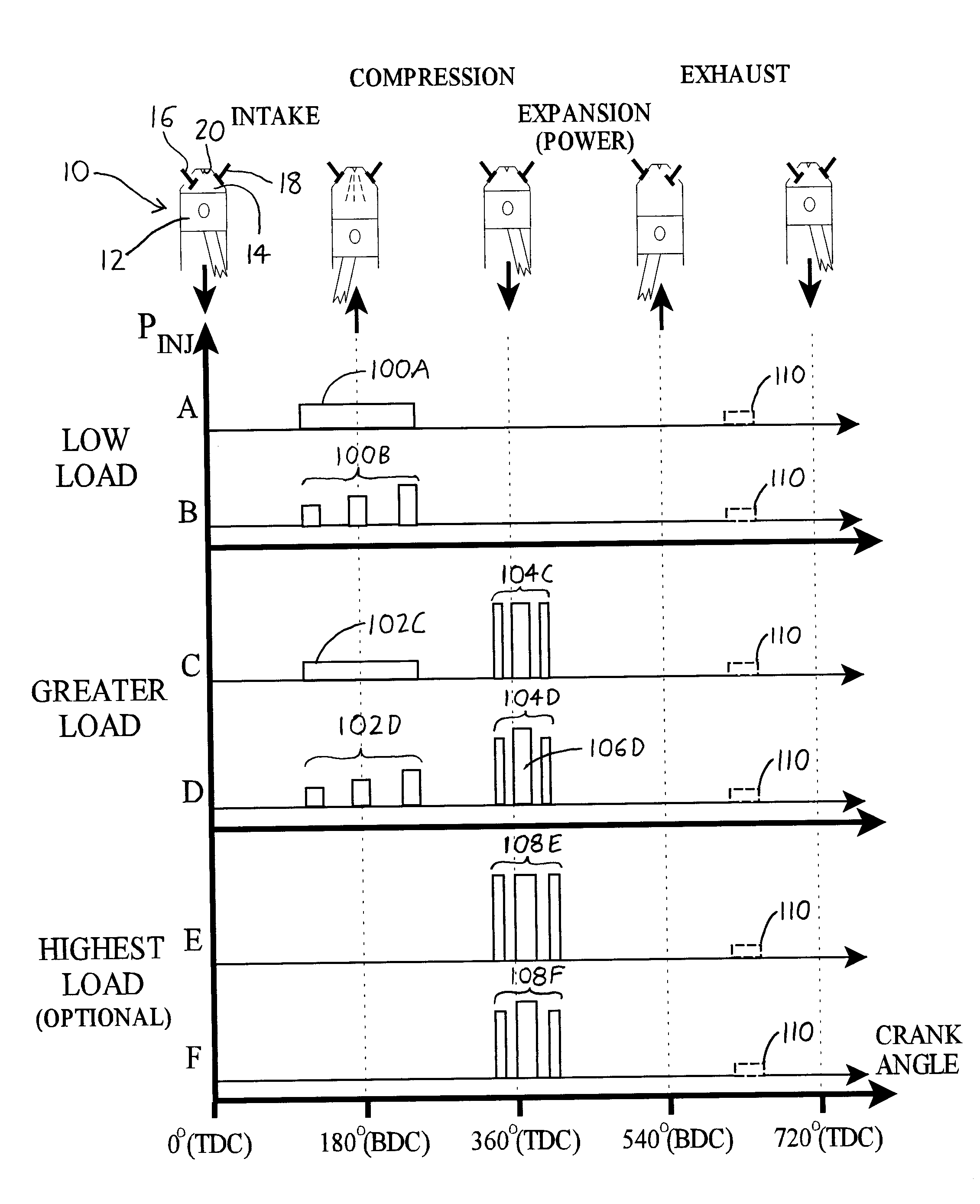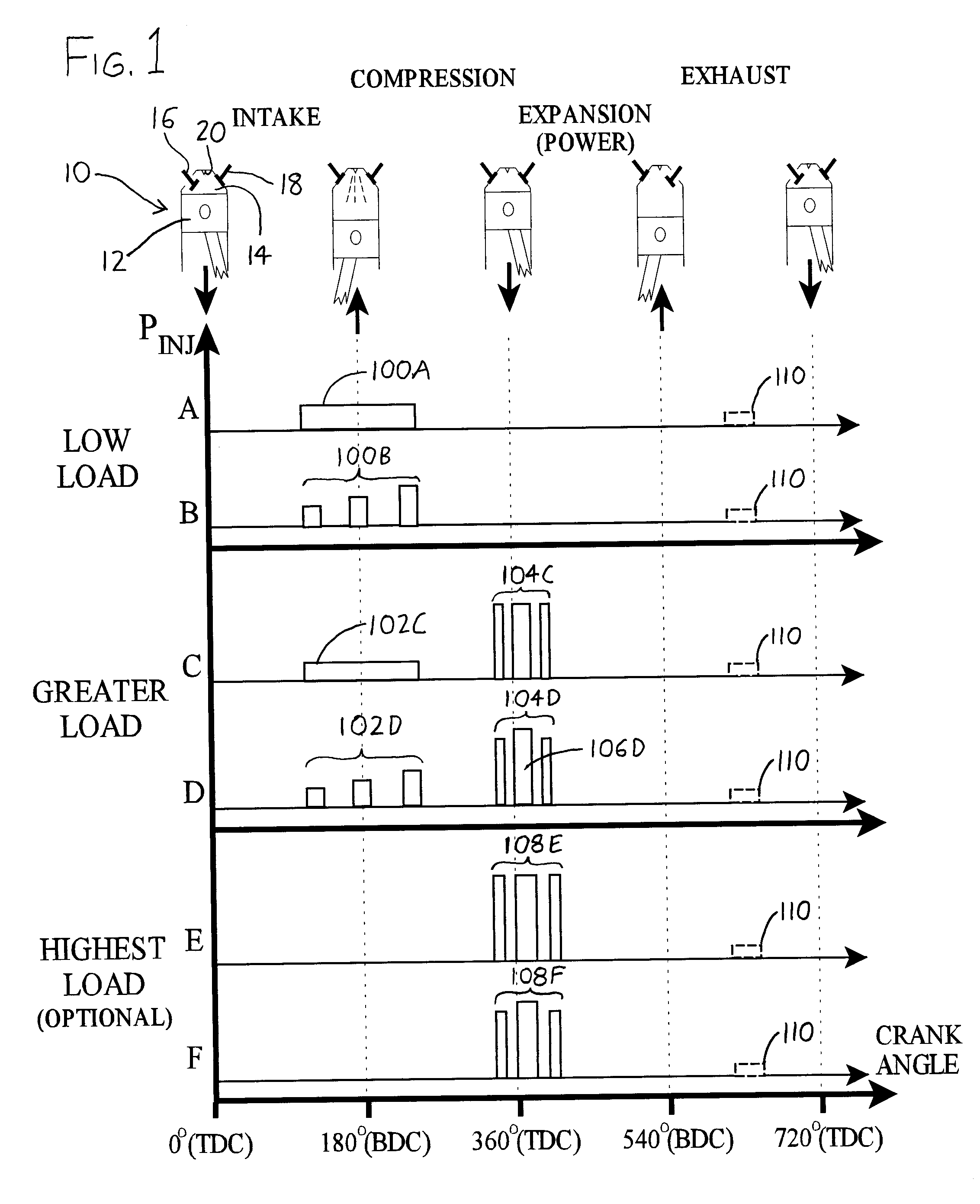Adaptive engine injection for emissions reduction
a technology of engine injection and emission reduction, which is applied in the direction of fuel injection apparatus, electric control, charge feed system, etc., can solve the problems of reducing the oxygen in the combustion regime, non-optimal combustion, and reducing the maximum combustion temperature, so as to improve the power output and reduce the injected fuel volume. , the effect of increasing the injection pressur
- Summary
- Abstract
- Description
- Claims
- Application Information
AI Technical Summary
Benefits of technology
Problems solved by technology
Method used
Image
Examples
Embodiment Construction
[0022]Expanding on the foregoing discussion, it should be understood that the injection curves of FIG. 1 are merely exemplary, and the timing of injections, the duration of these injections, the profile shape of each injected charge, and the relative heights (i.e., the relative rates / pressures) for the various injection methods may in practice vary widely. As an example, in place of the depicted single constant pressure low load injection 100A and starting greater load injection 102C, or the multiple increasing-pressure low load injections 100B and starting greater load injections 102D, a single increasing-pressure low load injection might be made, i.e., the profile of the injections 100A and 102C could be modified so that pressure increases over the course of the injection. In similar respects, the profile of each of the injections within 100B and / or 102D could be modified to increase over the course of the injection, and / or the profiles of the injections within 104C and / or 104D an...
PUM
 Login to View More
Login to View More Abstract
Description
Claims
Application Information
 Login to View More
Login to View More - R&D
- Intellectual Property
- Life Sciences
- Materials
- Tech Scout
- Unparalleled Data Quality
- Higher Quality Content
- 60% Fewer Hallucinations
Browse by: Latest US Patents, China's latest patents, Technical Efficacy Thesaurus, Application Domain, Technology Topic, Popular Technical Reports.
© 2025 PatSnap. All rights reserved.Legal|Privacy policy|Modern Slavery Act Transparency Statement|Sitemap|About US| Contact US: help@patsnap.com


